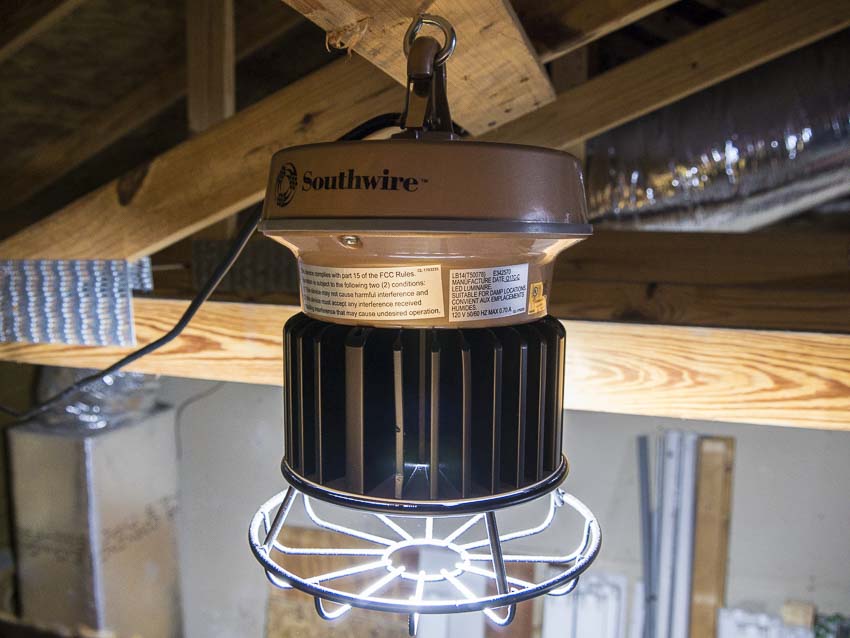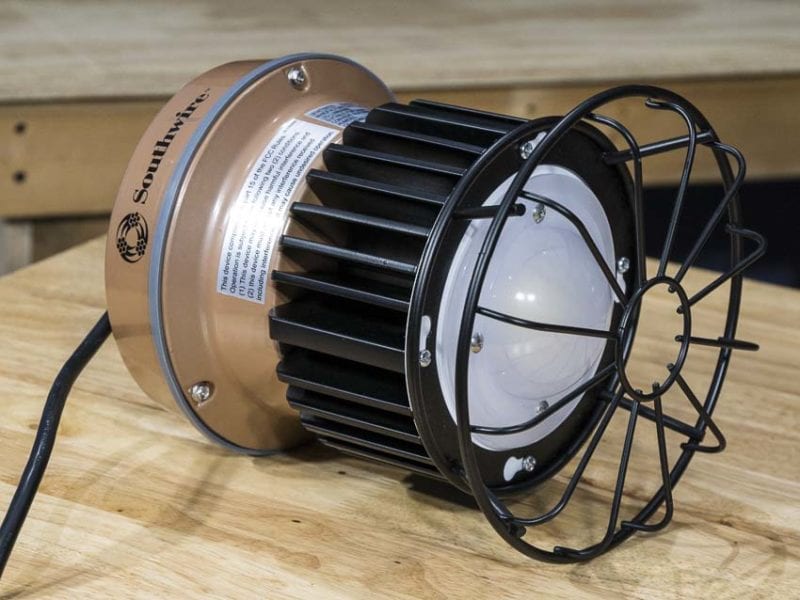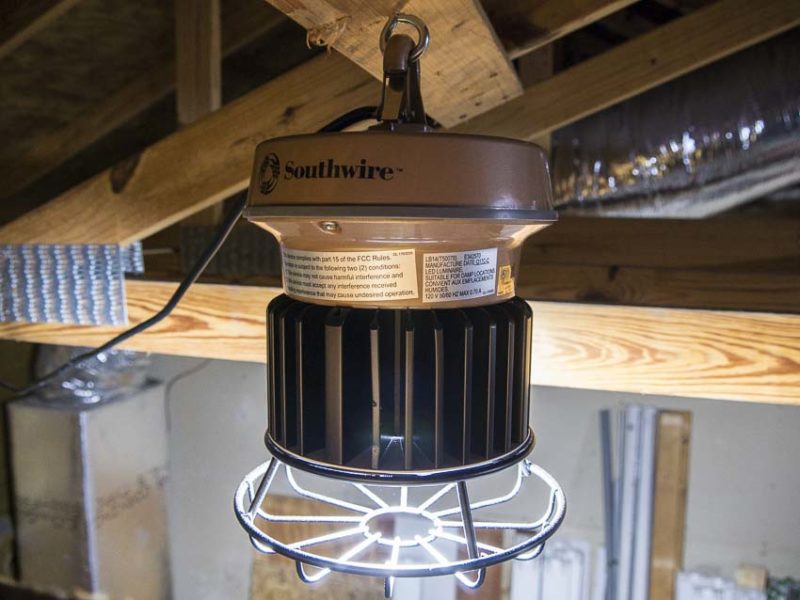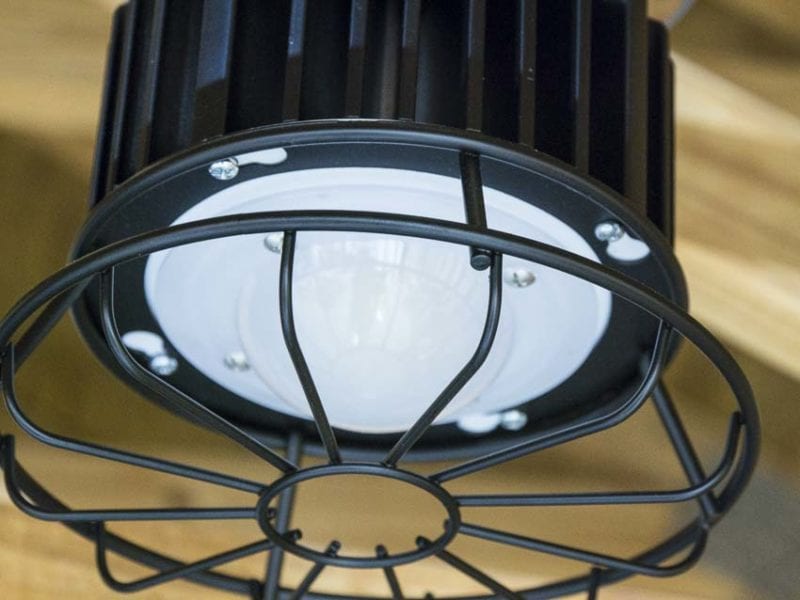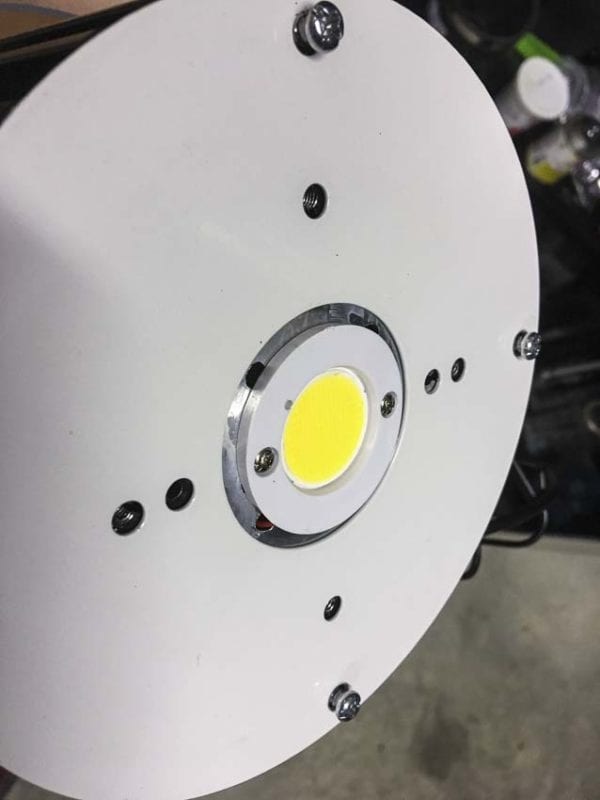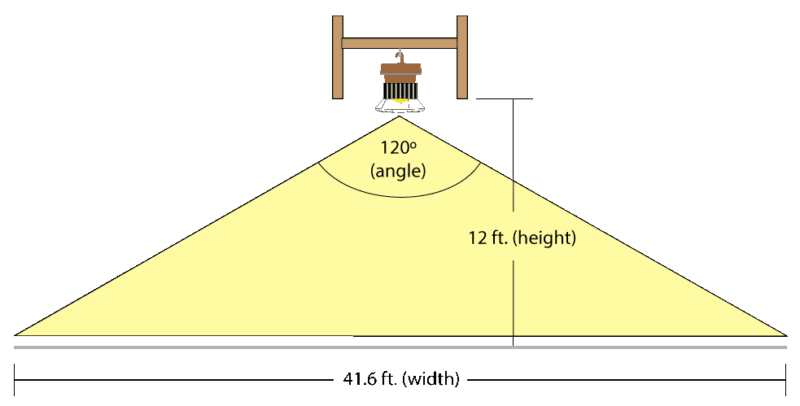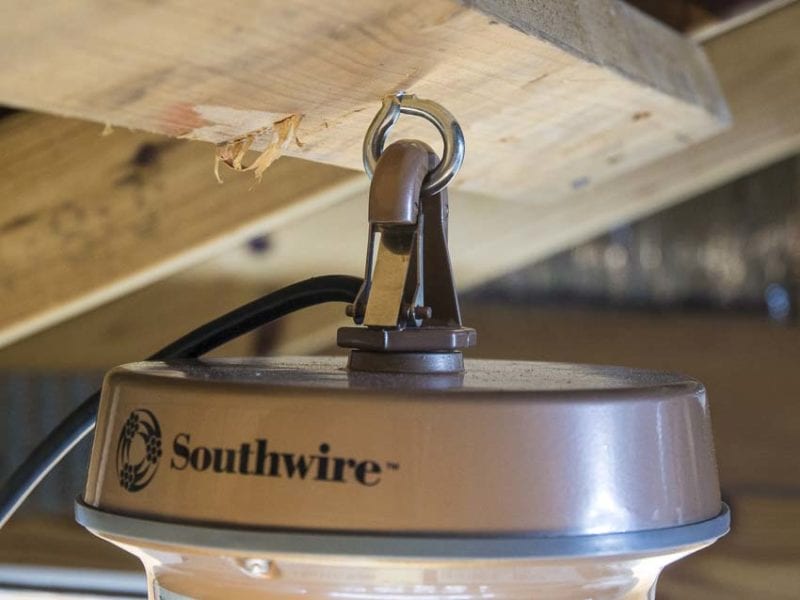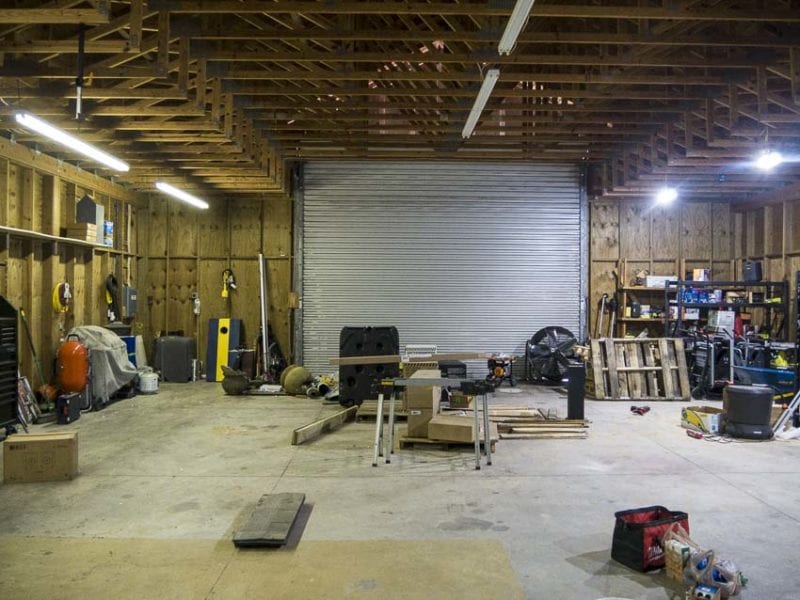When talking about low bay lighting, solutions typically come in the form of HID, CFL, and LED. HID stands for high-intensity discharge. These lamps produce light by arcing a filament inside a gas-filled tube. They run hot, and typically make up your high bay lighting and other applications requiring high levels of light output. They’re actually more efficient than either fluorescent or incandescent lamps. LED, however, kicks HID’s butt. And that brings us to solutions like the Southwire LED Low Bay Light. New LED lighting products are currently dominating handheld and portable lighting markets, but now fixed lighting is catching on.
“Fixed” lighting, of course, also includes temporary lighting. That covers lighting used in any indoor or outdoor application as can be found in construction sites, manufacturing plants, tunnels, or even disaster or emergency service locations.
LED Low Bay Light Features
First and foremost, the concept of a low bay light can cover anything from a multi-bulb CFL solution to a bright, single bulb canopy or LED. The common thread is that you need an affordable solution with plenty of light output and a fixture that installs easily. Southwire has a number of features that cover all of these requirements.
Let’s start with affordability. The $124 street price of the Southwire LED Low Bay light may not sound inexpensive, but compare that to your typical low bay solutions. CFL hoods aren’t much cheaper—particularly once you factor in your T8 bulbs. Account for the hassle, installation headaches, breakage, and cleanup, and the comparison gets even more favorable.
That ties into the second issue of light output. The Southwire T50078 Low Bay Light puts out around 8200 lumens. At 50,000 hours it will still crank out close to 6,000 lumens. That’s a ton of output—and all at just 78 Watts of power consumption.
Southwire T50078 Durability and Build Quality
This leads naturally into durability. The housing of the Southwire LED low bay light is made from die-cast aluminum. It also has a nice squat shape that makes it easy to handle and hang.
The LED array is cooled with centrifugal fins that surround the business end of the low bay light.
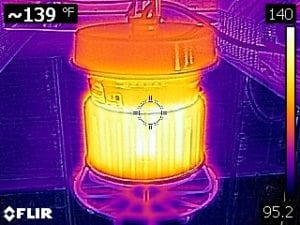
Because the light engine on this low bay is driven by LEDs, taking the fixture up and down isn’t going to result in breaking bulbs and/or CFL tubes. You probably don’t want to drop it from 12 feet in the air, but if you do, the integrated light cage will give you a fighting chance. We removed the low bay light’s dome to reveal the circular LED panel beneath. The dome protects the LEDs from damage, but it also diffuses the light, reducing any edge shadows. When we installed the twelve LED low bay lights we couldn’t locate the edges anywhere. The temporary LED fixtures lit the shop evenly and thoroughly. It also runs cooler than HID. We measured 139º F with it operating in the rafters of our shop.
Installing the Southwire Low Bay LED Light
The 120° beam angle covers a large area reducing the number of fixtures needed in that area. Here’s basically what the spread looks like in our shop. As you can see, the 120º throw angle is very wide. When planning for overlaps you essentially want to consider the height of the Southwire Low Bay LED light and do your math such that intersections happen at working table height.
We overestimated our install a bit in order to achieve even greater levels of light output in the shop. In the end, we had Ben Parker, our resident electrician, install 12 Southwire low bay LED lights in our 47×40 shop space. Since our former T12 CFL fixtures connected directly via hard-wired Romex, we needed to install electrical boxes for the review.
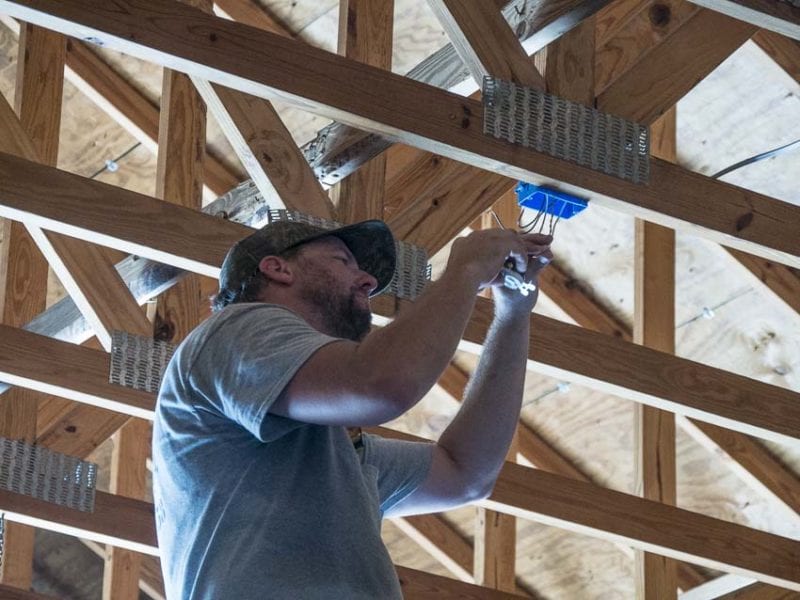
After installing the outlets, we set the hanging height of the Southwire Low Bay lights by fastening short 2x4s across our rafters. We then mounted an eye bolt and attached the lighting to that using the integrated clips. You can also hang an S-hook in between the eye bolt and the fixture to give you more clearance and make it even easier to connect and/or move.
Checking Our Work
It was then a simple matter to plug the lights into our newly-installed 20A outlets. Since each light only draws a maximum of about 78 Watts, you could (technically) get nearly 25 of these on a single 20A circuit!
One of the fun things we did during the installation included comparing the two lighting systems simultaneously. Take a look at the halfway point where one-half of the shop had T12 CFL bulbs and the other was loaded with four Southwire low bay LEDs:
You can already see that the Southwire low bay lights on the North (right) side of the shop produce a whiter light—and more of it. After we were finished, the shop lit up with a ton more visibility and clarity. Everything in the workspace is so much clearer, and colors are more accurate.
Conclusion
Southwire priced its low bay LED lights well within norms—around $127. Taking advantage of LED lighting certainly delivers better color and output. The real advantages of temporary lighting, however, have to do with durability and longevity. If you’re building out a large space—or you just want to load up on low bay LED lighting the T50078 lights from Southwire make for a compelling solution. At this price, the Southwire LED low bay light is priced the same or lower as similar HID and 4-ft T8-style LED fixtures. It’s just a lot more durable and installer-friendly.

